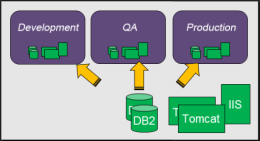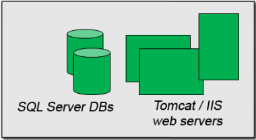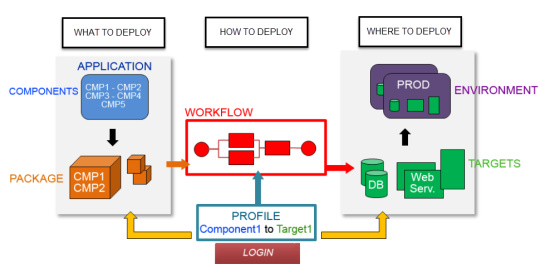Application
&
Components
An Application entity is the main container of the deployment model and typically consists of multiple components. As an example, your application may consist of two components, a web application and a database component. Each application component utilizes a specific technology such as Apache Tomcat or a Microsoft SQL database. The application entity also includes component-related workflows to install, upgrade or remove application components.

Workflows are used to carry out physical deployments. A workflow describes all necessary steps for a deployment of your application. As your application consists of different components, the top level of the workflow (Application Workflow) represents your application architecture and Component Workflows are used to deploy the individual components. You can define your Component Workflow quickly with pre-defined Actions.

An environment consists of deployment targets which represent your endpoints. Different environments are used for different phases in the software delivery cycle, for example Development, QA, Staging, Production. An environment is typically set up once and used by several applications.

A Deployment Target is an endpoint where you deploy your application component(s) to. All endpoint related parameters, e.g. port numbers, IP addresses and directories are typically related to the deployment target and can be configured there. The execution itself will be handled by the assigned operating system agent.

A Deployment Profile links an application to one specific environment. Typically it’s an intersection between the application components and the environment deployment targets, e.g. Tomcat application components will be mapped to the Tomcat deployment target. The deployment profile is used during the deployment execution and defines where to deploy to.

A Package is an instance (a version, a revision, a tag, …) of your application and defines the content which you want to deploy. Here you decide if you want to deploy the entire application or just a few specified components.


